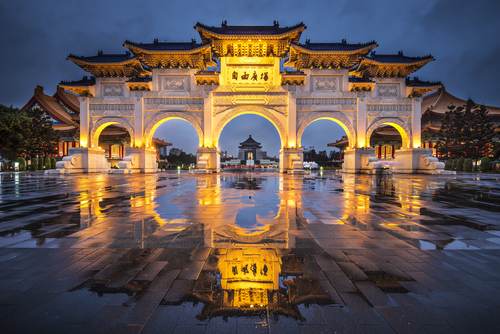Taipei, Taiwan is a pleasant travel surprise, rich in culture and history
TAIPEI, TAIWAN, March 31, 2018: Believe it or not, with tourist revenues of over 11 billion dollars annually, Taipei, Taiwan ranks as the ninth largest economy in the world. That’s the most for any Chinese-speaking city. The city also welcomes more than 6 million overseas visitors each year, making it the 15th most visited city on the planet.
Politically and geographically, the island nation of Taiwan, formerly known as Formosa, has a long and complex history. Its capital city Taipei also serves as the capital of Taiwan Province. Both are part of the Republic of China (ROC) which designated six special municipalities in the island nation shortly after World War II.
Situated at the northern tip of Taiwan, Taipei also encompasses New Taipei City. The latter is approximately 16 miles southwest of the port city of Keelung.
Taiwanese citizens and tourists alike regard Taipei as a major hub of Greater China. This is in large part due to its geographic location combined with its economic, cultural, high tech and educational assets. About one-third of all Taiwanese citizens reside in the metro district of the city.
For clarification, the Taiwanese use “Taipei” interchangeably. It can refer to the entire metropolitan area, or simply to the city itself, similar to New York City in the U.S.
Taipei, Taiwan: An island nation’s biggest city
As with the island of Taiwan, the island nation’s biggest city is comprised of “pockets” of population containing four major ethnic groups. These include the Hoklos, the Mainlanders, the Hakkas and the aborigines. This diversity provides the city with much of its cultural character along with a variety of world-class architectural and cultural landmarks.
Architectural highlights
Notably first on the architectural list is Taipei 101. That’s the name of the city’s dominating 101-floor skyscraper rising 1,670 feet to the top. When it first opened in 2004, Taipei 101 grabbed the honor of being the world’s tallest building. It held that top spot for six years until the Burj Khalifa in Dubai surpassed it.
Despite that, Taipei 101 became the first building in history to measure over a half of a kilometer in height. It still ranks as the world’s tallest “green” building.
There are other more traditional cultural and natural landmarks dispersed throughout the city. This creates a rich and diverse place for intrepid travelers to explore.
Chiang Kai-sheck Memorial Hall and Liberty Square
Among the other most visited sites here is the National Chiang Kai-shek Memorial Hall honoring General Chiang Kai-shek, the former President of the Republic of China.
The monument stands at the east end of another important Taiwanese landmark known as Liberty Square or Freedom Square. Liberty Square has been the most popular gathering spot in Taipei since its completion in the latter part of the 1970s. The name refers to the historic role it played in Taiwan’s transition to democracy in the 1990s.
Liberty Square also includes the National Concert Hall and National Theater with their adjacent parks. This makes the entire complex an ideal way to visit much of Taipei’s architectural and historic treasures in a single outing.
The Chiang Kai-shek Memorial is located in the Zhongzhen District of Taipei within sight of Taiwan’s Presidential Building.
Longshan Temple
Constructed in 1738, the Longshan Temple of Manka, a religious temple in the Wanhua District of Taipei, has long served as a gathering site and place of worship for Chinese settlers. Though heavily damaged in World War II, it has since been rebuilt and is the best known temple in Taiwan.
Markets and Geopark attractions
Among other attractions in Taipei is the multitude of night markets scattered throughout the city. The markets are as popular with locals as they are with visitors, providing travelers an opportunity to mingle with local culture on an up-close-and-personal basis.
Arguably one of the most intriguing attractions in Taipei is the Yehliu Geopark along the coast about 15 miles from Keelung Port. The park is comprised of unusual rock formations created when geological forces erupted to push the Datun Mountains out of the sea. The rock formations stretch more than a mile into to ocean. But what is visible on land is intriguing, eerie and fascinating at the same time.
Many of the rock formations have been given names that make them easy to identify with monikers such as “Fairy Shoe,” the “Beehive,” the “Ginger Rocks,” the “Sea Candles.” But the best-known formation of all, which has become the image of Taiwan and the unofficial emblem of the town of Wanli, is the “Queen’s Head.”
“Taipei 101” may be the name of the second tallest building in the world. But it’s also a good title for a course on the history of Taiwan and this marvelous yet little known travel treasure.

